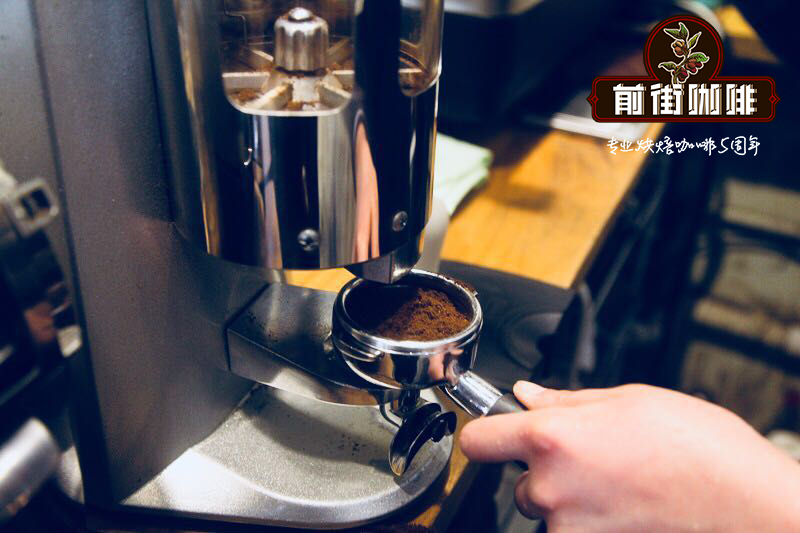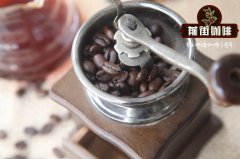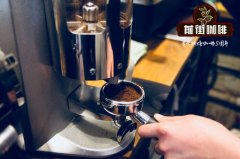The usage and identification methods of coffee grinder introduce how to select coffee grinder?

Professional coffee knowledge exchange more coffee bean information please follow the coffee workshop (Wechat official account cafe_style)
The advantages and disadvantages of coffee grinder are mainly reflected in the following aspects:
Grinding shape
After grinding the coffee into powder, each coffee powder can be regarded as an independent individual, and each coffee powder can be extracted in contact with the water surface. The larger the coffee powder, the longer the extraction time, and the smaller the coffee powder, the shorter the extraction time.
The size of the size is what we call the thickness of coffee grinding.
The better the coffee machine, the thickness is about the same, and the shape and size are almost the same. Only in this way can we ensure that the progress of each coffee powder is the same throughout the extraction process.
The coffee powder ground by different cutters has different shapes, and the way of extraction and taste will also change. Some are flat, some are granular, etc.
Fine powder rate
The standard of espresso is that the coffee powder visible to the naked eye below the diameter 0.3mm is called fine powder, which can be relaxed to less than the diameter 0.1mm if applied to hand brewing. These fine powders can plug the gap between normal coffee powders and even clog filter paper filter bowls.
The perfect situation after coffee grinding is that every coffee powder after grinding is of the same shape and size.
But in fact, it is inevitable that these very fine powders will be produced during grinding, similar to the dregs that fall when we break open cookies. The extraction speed of this part of the ultra-fine powder will be much faster than other powders, that is to say, when other coffee powders are fully extracted, these fine powders must be over-extracted.
When applied to hand flushing, the production of fine powder will also clog the filter paper, resulting in a decrease in flow rate and a longer extraction time leading to over-extraction.
So the less this kind of fine powder is produced by the bean grinder, the better the bean grinder will be.
Caking
Many people will find the caking phenomenon of coffee powder in the process of using bean grinder, mainly because of the effect of static electricity.
The high speed of the motor produces heat, cutter head wear, and even environmental humidity will cause caking.
But the most troublesome is static electricity, once the grinding is too fine static electricity on the coffee powder will be revealed. Thus the formation of caking causes the imbalance of cloth powder filling and pressing and finally affects the quality of coffee production.
Residual powder
The coffee powder grinded by the coffee grinder will reach the powder storage bin through a channel and then dial it into the powder bowl with a pick, or directly through the channel to the powder bowl.
But there will be some coffee powder left in this powder bin and passageway, which naturally loses a lot of flavor when it is exposed to the air for a long time, and will enter the powder bowl of the next cup of coffee with the next coffee.
In order to reduce the impact of residual powder on coffee, many stores grind a certain amount of coffee powder in advance before each production, replace the old powder in the channel and powder storage, and then grind the new coffee powder.
But the amount of waste will naturally increase, so the shorter the channel of the coffee maker, the better.
Cutter head
The core of the coffee grinder is the knife head.
According to the grinding method and the shape of grinding teeth, there are four common types of cutter head-flat knife, conical knife, ghost tooth and round blade.
Flat knife
The upper and lower cutters grind the coffee into powder by cutting.
Most of the coffee powder is flaky, and the surface area of water extraction is larger, which makes it easier and faster to extract.
Has an advantage in making espresso.
But also because the extraction speed is too fast, coupled with more fine powder, it is easier to over-extract. In addition, the taste appears to be relatively simple after reducing the extraction time.
The coffee powder coffee produced by flat knife head grinding is more efficient and suitable for fast-paced storefront use, but the disadvantage is that it is easy to extract.
There are also a lot of flat cutter heads used in household machines, and it is now the most common one on the market.
The coffee powder most suitable for grinding espresso.
Conical knife
The method of grinding is adopted.
The coffee powder is granular and can not be easily extracted from the inside.
The coffee has a layered taste, and the way of rolling reduces the collision between coffee beans, and the rate of fine powder is lower, so it is generally more suitable for making hand-brewed coffee.
However, to keep the coffee powder completely extracted while the outside can not be over-extracted, it requires considerable temperature control and time control technology.
The coffee powder ground by cone knife is suitable for hand punching, siphon pot and other utensils.
Round blades and ghost teeth
Round blade and ghost tooth are a kind of tooth profile between flat knife and conical knife, which is an attempt in the process of studying the cutter head.
In fact, the round blade always adds a part of crushing to the cutting of the flat knife, making the taste more layered. The specific performance is that the product is cleaner, the sweetness is more prominent, and it is easy to capture the flavor, which is suitable for the taste of most people.
Compared with the round blade, it is closer to the flat knife, and the arrangement of the ghost tooth cutter head is bolder. The ghost tooth cutter head can theoretically grind coffee powder closer to the ball, reducing the rate of fine powder and making the taste cleaner.
But in fact, because of the flat taper cutter head with round blade, a wide range of technical materials can be used, such as heat treatment to improve hardness and surface oxidation treatment. All can be machined with precision.
Because of its special shape, the grinding plate of ghost teeth can only be molded at one time by casting, and there is no way to carry out secondary processing through precision instruments. Therefore, the surface is relatively rough and the precision is not high. It is precisely because of this that deformation will occur if hot processing is used to improve hardness.
Therefore, the cutterhead of ghost teeth is generally not sharp enough and can only reach the level of cast iron.
Thank you for reading.
Important Notice :
前街咖啡 FrontStreet Coffee has moved to new addredd:
FrontStreet Coffee Address: 315,Donghua East Road,GuangZhou
Tel:020 38364473
- Prev

The bean grinder suitable for hand brewing coffee recommends how to choose the coffee grinder?
Professional coffee knowledge exchange more coffee bean information Please pay attention to the coffee workshop (Wechat official account cafe_style) excellent coffee grinder refers to the stable proportion of coarse and fine powder bean grinder, at present, many famous coffee mill manufacturers have applied a lot of high technology, the purpose is to pursue the stability of the ratio of coarse to fine powder in coffee powder. And some cheap bean grinders are in the coffee powder.
- Next

The usage and identification methods of coffee grinder introduce how to select coffee grinder?
Professional coffee knowledge exchange more coffee bean information Please pay attention to the coffee workshop (Wechat official account cafe_style) the advantages and disadvantages of the coffee grinder are mainly reflected in the following aspects: after grinding the coffee into powder, each coffee powder can be regarded as an independent individual, and each coffee powder comes into contact with the surface of the water.
Related
- What is the Philharmonic pressure? How to use Philharmonic pressure to make delicious coffee
- Why does a hand grinder have more fine powder than an electric grinder?
- In addition to the hot mom, what is the difference between the versions of EK43 | ditting and Mahdi ek43?
- What kind of equipment do you need to make coffee by hand? Introduction to novice starter cooking equipment tools
- Espresso needs to be ground how thick and thin scale entry Italian Coffee Machine Bean Grinder investigation and Grinding course
- How much does it cost to open a small private cafe? How much does it cost to learn coffee? How to operate it?
- The difference between the flavor characteristics of hand-brewed coffee and coffee maker is hand-brewed coffee really better than coffee maker? Can I use a coffee machine to make coffee beans by hand?
- The difference between 01 and 02 of hario v60 filter cup what is the difference between 01 and 02 filter cup opening and cooking flavor
- What's the difference between the smart cup and the French kettle? Which is better, the French kettle or the Smart Cup?
- What's the difference between a smart cup and a V60 filter cup? The difference between the taste of smart cup and hand-brewed coffee

